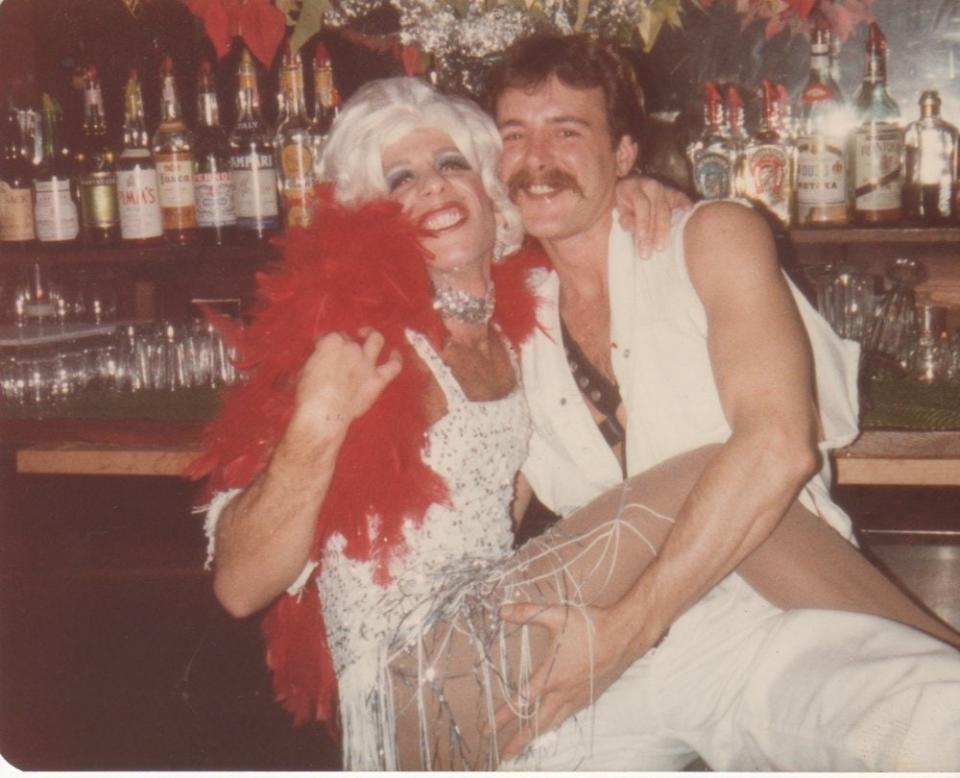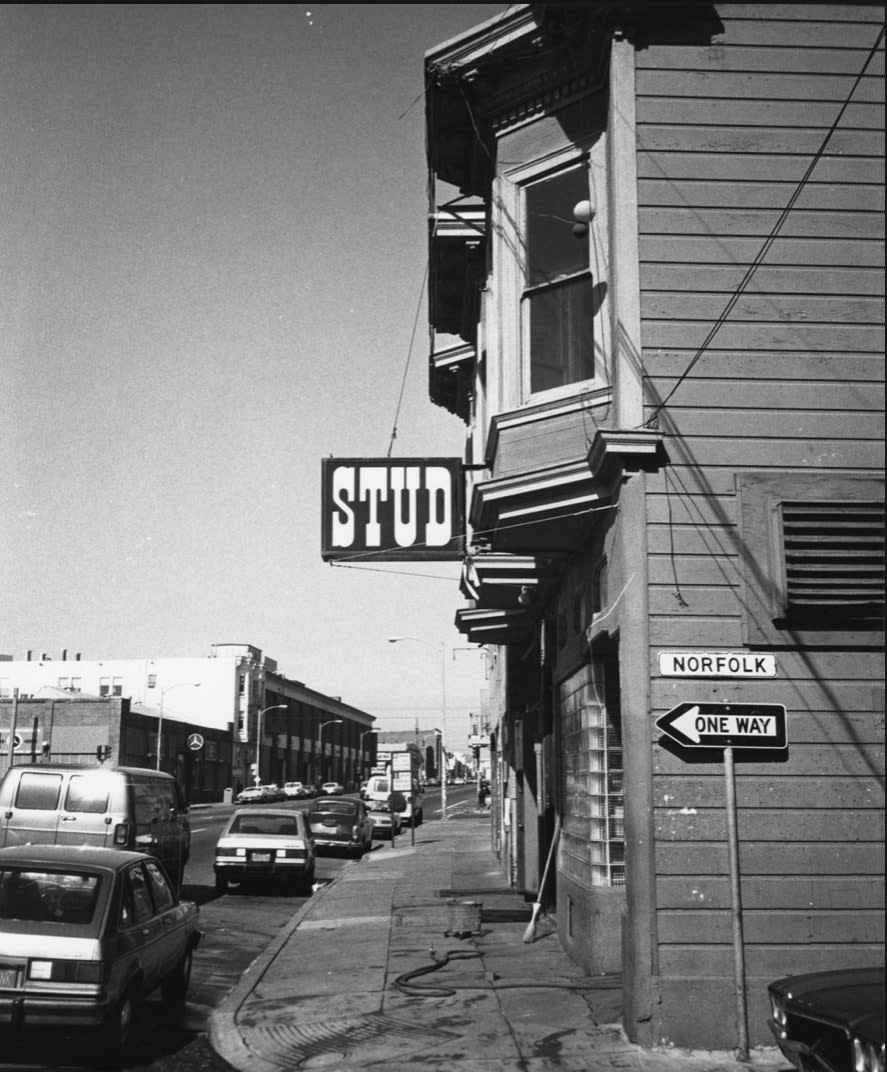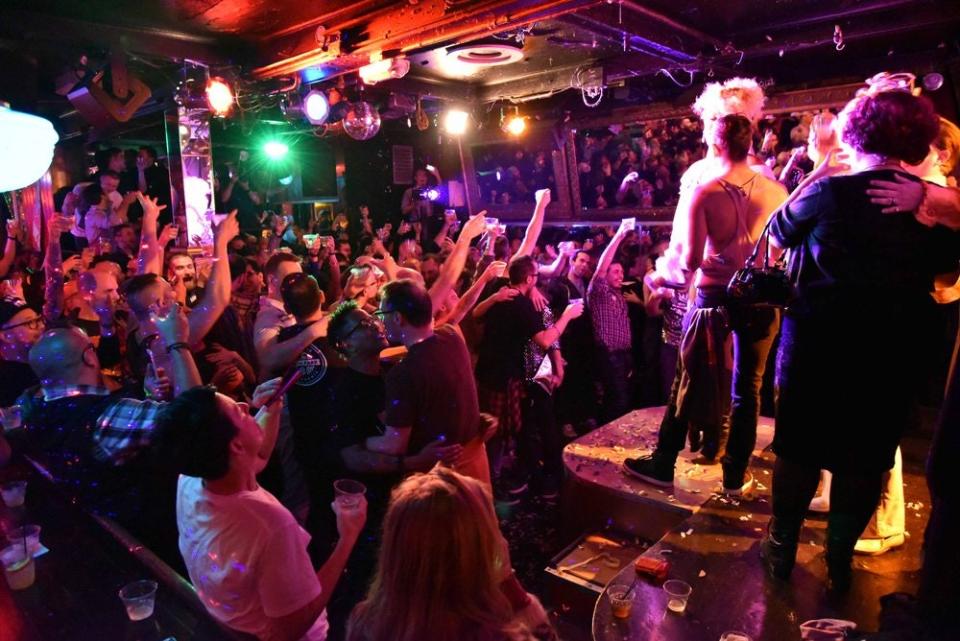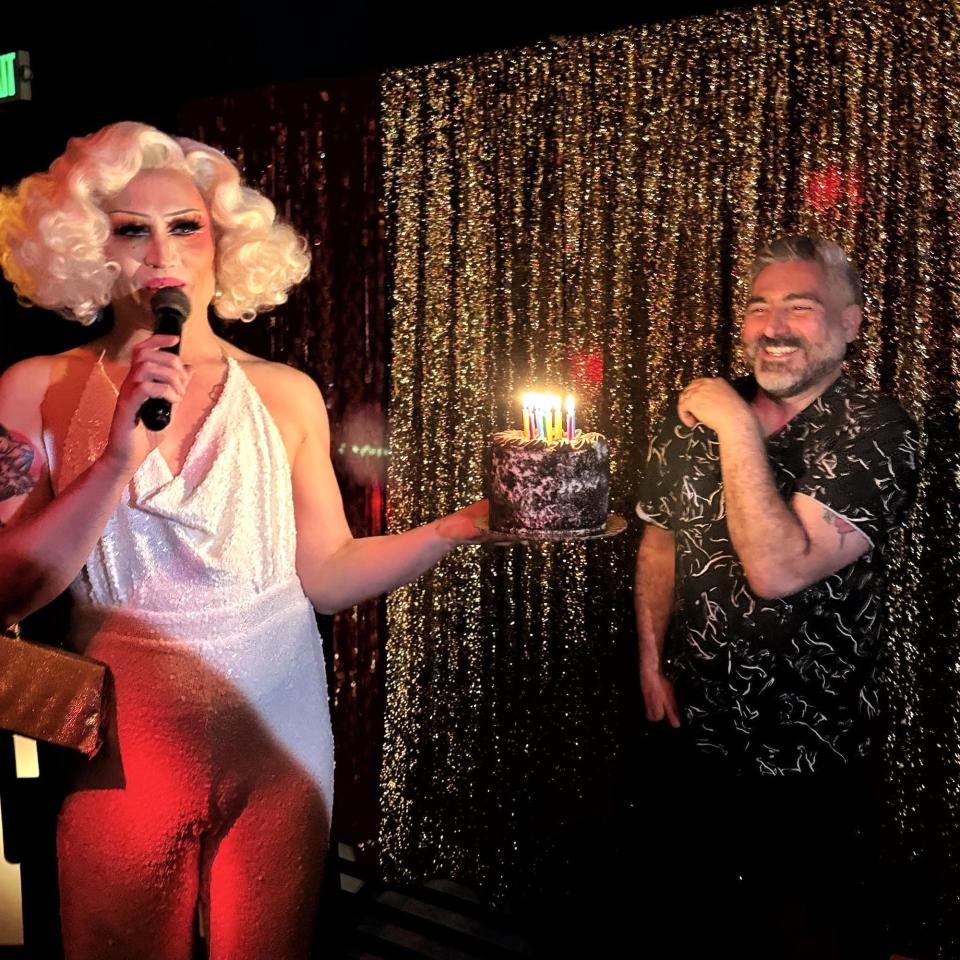How the Stud, A San Francisco Queer Bar for the “Freaks,” Was Reborn

Robert Clay
Everyone’s friends with the drag queen. She’s trying to make her way off the dance floor, but she can’t go five steps without bumping into someone who wants to say hi, applaud her performance, or nod to her shimmery jumpsuit with an approving once-over. It seems like she knows everyone at the party — and she’s not the only one.
In the next room, gaggles of gays decked out in their best leather and tight black “Stud” t-shirts congregate in groups, sipping drinks poured by a harried but smiling bartender. It’s the week before the grand reopening of the Stud in San Francisco, and the community has shown out in full force to check out the new space, talk to friends they’ve been missing, and celebrate a return many weren’t sure would ever happen.
From its birth in 1966, when it opened on Folsom street as a cowboy-themed leather bar, the Stud stood out from other bars in the leather-heavy South of Market neighborhood. Known as a rare place that welcomed everyone, the Stud was reportedly one of the first clubs in the city to hire Black bartenders, as well as one of the first gay bars in the neighborhood to welcome women and gender nonconforming people. It quickly became a home for hippies, punks, and other subcultures whose members couldn’t find a place in the more macho, “mainstream” gay scene of the time.

Over the decades that followed, it would become an icon of San Francisco’s queer nightlife scene, outlasting many of its mid-century peers. When the Stud closed during the pandemic, some feared it would never reopen, and that the home so many had found there would be lost forever. But four years later, the Stud is back and bigger than ever. Though it now lives two blocks away from its previous location, the new bar holds echoes of its former iterations, from the photo booth tucked in the corner to the sign that reads “everybody is welcome at the Stud.”
Members of the Stud collective, the group that owns and operates the bar, wanted these similarities to be more than just skin deep. They tell Them that they wanted to carry on the bar’s legacy of being a space for those who couldn’t quite fit into SF’s mainstream gay scene, and keep the Stud a place for the “freaks.”
“It was always freaky, it was always trying new things,” says collective member Marke Bieschke. His first encounters with the Stud came in the mid-’90s, when he moved to the Bay Area and found community at the Stud’s Monday night queer hip-hop parties, which he says were some of the first of their kind among similar bars in the area. “The Stud was the place to be for things that other queer bars didn’t offer at the time,” he continues. “It was really unique.”

“That’s always been a throughline. The Stud has always been talked about as a place that was welcoming to everybody,” says Rachel Ryan, a fellow co-owner and so-called “comrade-in-chief” of the 17-member collective, who found her home at the Stud in the late aughts at Club Something on Friday nights.
“It’s only a matter of time when you’re friends with drag queens before you get pulled up on stage, and suddenly you’re a backup dancer, and then suddenly you get upgraded and you have a wig, and suddenly then you’re lip synching,” she says. “All of a sudden, I just found myself in this wild, creative, vibrant community of people and friends… I would walk in on a Friday night and know everybody there.”

Over the years, the bar attracted a notable roster of celebrity visitors, including members of the Scissor Sisters, Lady Gaga, and even former mayor Dianne Feinstein. It was a favorite venue of Etta James, who often returned for Valentine’s Day performances throughout the ’70s and ’80s, and recalled it as “a gay dive so small that I had to dress across the street at Hamburger Mary’s” in her autobiography.
In the ’80s, when punk and new wave shook the dance floor and guests like Siouxsie Sioux and Sylvester dropped by to shoot a round of pool, it moved again to the corner of 9th and Harrison Streets. It was here where the Stud played host to community fixtures like the late, legendary drag queen Heklina’s Trannyshack, a punky drag show and party that was hosted there and became a staple of SF’s queer nightlife scene.
“I really do feel that sense of relief, and optimism, and safety when I come into the Stud. It’s just a wonderful, loving community that accepts you, warts and all.”
“My memories of my Stud years will always be my fondest memories of San Francisco,” said Heklina in 2020, who described working at the bar before creating Trannyshack in 1996. “The Stud was the only place where that could have happened, because the Stud welcomed everyone and allowed everyone to thrive. I owe so much to the Stud.”
During the HIV/AIDS epidemic, which devastated the Bay Area’s queer communities, the Stud played host to fundraisers and parties to help those who needed it most. According to collective members, the bar’s dance floor was the final resting place for the ashes of a number of people who died during that time.
Throughout the years, and through epidemics, pandemics, and never-ending Bay Area rent hikes, community members have frequently rallied behind the Stud. When rising rents threatened the bar in 2016, a group of people came together to buy it from former owner Michael McElhaney, and the Stud collective was born. According to its website, it is the first cooperatively owned LGBTQ+ nightclub in the country.

The bar shuttered its doors in March 2020 in response to the COVID-19 pandemic, and the collective announced a more permanent closure that May, commemorating the moment with an online drag funeral. But even as it closed, the collective prepared for the future, holding online drag shows and selling merch to stay afloat.
Ryan compares the road to reopening to the myth of Sisyphus. “I’m not gonna lie, I was losing hope,” she says. “But it’s so fun to be able to share in something that we’ve worked so hard on over the years, and to have our level of excitement mirrored in so many other people — even people who I’m meeting for the first time, who want to tell me their own personal story with the Stud, what it means to them or how excited are for us. It really has made the whole wild ordeal feel so worth it.”
As much as the collective wants to carry on the Stud’s legacy, there are new things to look forward to in this latest iteration, too. The new location is much bigger, with two bars and an additional outdoor patio space, though it is still undergoing upgrades; Ryan says they have plans to take out an industrial kitchen in the back and add in a stage, which the bar currently lacks.
These portraits and stories show how the city's queer nightlife scene responded to an unspeakable crisis: with solidarity, resistance, and excess.
In typical San Francisco fashion, the new space comes with its own chaotic, gay history: it played host to a vegetarian restaurant that was a front for a group whose members were implicated in the kidnapping of Patty Hearst, and before that served as a leather bar called the Stables in the ’70s. (“This is my dad joke at the moment, the fact that we’re bringing the Stud home to the Stables,” Ryan says.)
In terms of events, they hope to bring back some old favorites while also making space for new generations of club kids and baby queens. (A queer K-Pop dance party is already on the calendar!) For the collective, Ryan says, it’s important to find the “balance between honoring this amazing legacy, and then also setting it up to succeed moving into the future… we feel ourselves as both the stewards of the past, and also the people who are responsible for ushering in this new generation.”
Even with its new look, longtimers like Bieschke can still feel the ghosts in the space of those who came before. “I really do feel that sense of relief, and optimism, and safety when I come into the Stud,” he says. “It feels like a home to people like me who had to find their way in the world, who don’t fit in anywhere else. It’s just a wonderful, loving community that accepts you, warts and all.”
Get the best of what’s queer. Sign up for Them’s weekly newsletter here.
Originally Appeared on them.


